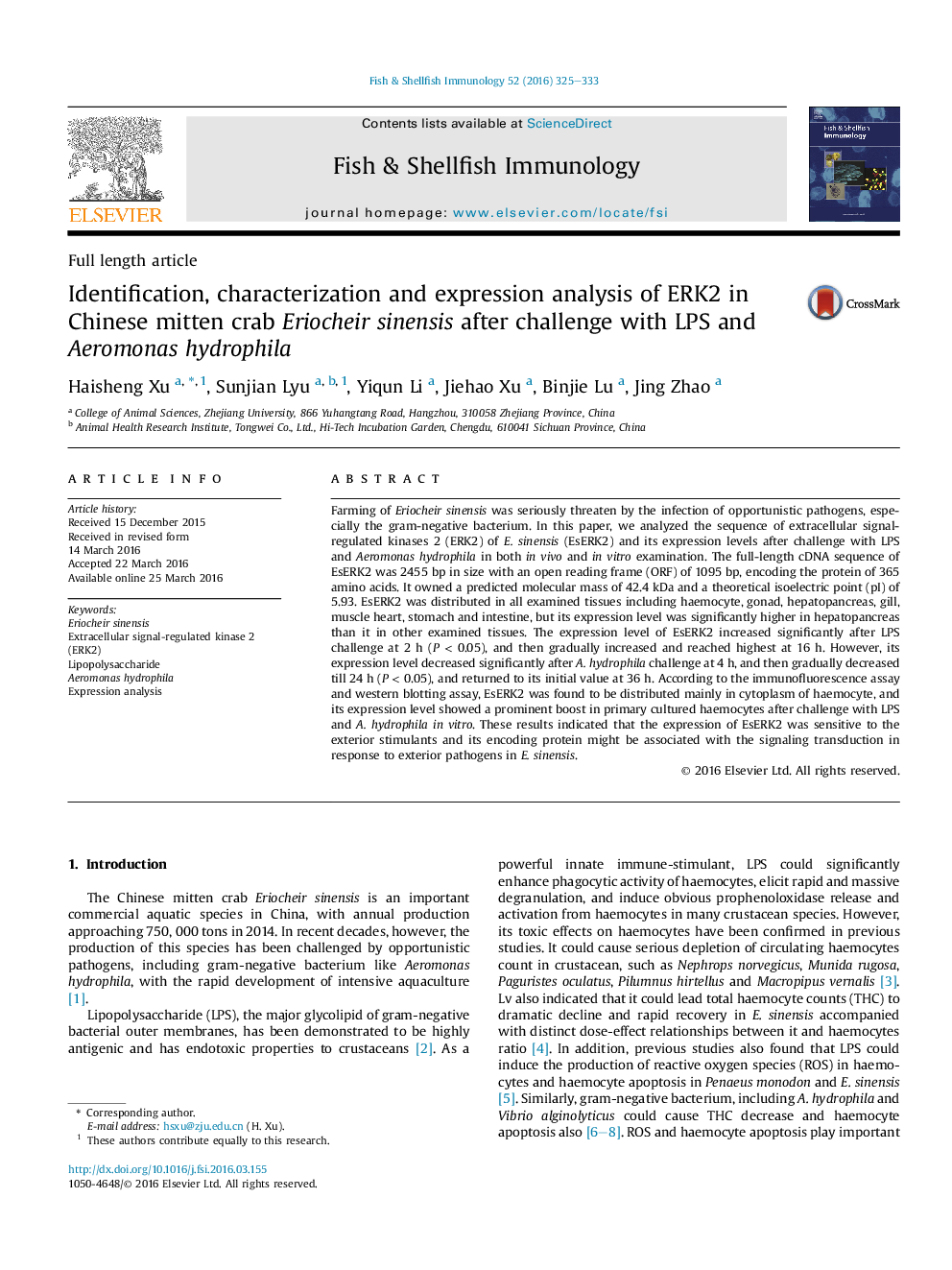| Article ID | Journal | Published Year | Pages | File Type |
|---|---|---|---|---|
| 2430873 | Fish & Shellfish Immunology | 2016 | 9 Pages |
•We analyzed the characterization of EsERK2 gene.•Recombinant EsERK2 protein was expressed in Escherichia coli BL21 cells.•EsERK2 gene expression was significantly high in hepatopancreas.•EsERK2 gene was expressed differently after LPS and Aeromonas hydrophila challenge in vivo.•EsERK2 protein was up-regulation after LPS and A. hydrophila challenge in vitro.
Farming of Eriocheir sinensis was seriously threaten by the infection of opportunistic pathogens, especially the gram-negative bacterium. In this paper, we analyzed the sequence of extracellular signal-regulated kinases 2 (ERK2) of E. sinensis (EsERK2) and its expression levels after challenge with LPS and Aeromonas hydrophila in both in vivo and in vitro examination. The full-length cDNA sequence of EsERK2 was 2455 bp in size with an open reading frame (ORF) of 1095 bp, encoding the protein of 365 amino acids. It owned a predicted molecular mass of 42.4 kDa and a theoretical isoelectric point (pI) of 5.93. EsERK2 was distributed in all examined tissues including haemocyte, gonad, hepatopancreas, gill, muscle heart, stomach and intestine, but its expression level was significantly higher in hepatopancreas than it in other examined tissues. The expression level of EsERK2 increased significantly after LPS challenge at 2 h (P < 0.05), and then gradually increased and reached highest at 16 h. However, its expression level decreased significantly after A. hydrophila challenge at 4 h, and then gradually decreased till 24 h (P < 0.05), and returned to its initial value at 36 h. According to the immunofluorescence assay and western blotting assay, EsERK2 was found to be distributed mainly in cytoplasm of haemocyte, and its expression level showed a prominent boost in primary cultured haemocytes after challenge with LPS and A. hydrophila in vitro. These results indicated that the expression of EsERK2 was sensitive to the exterior stimulants and its encoding protein might be associated with the signaling transduction in response to exterior pathogens in E. sinensis.
